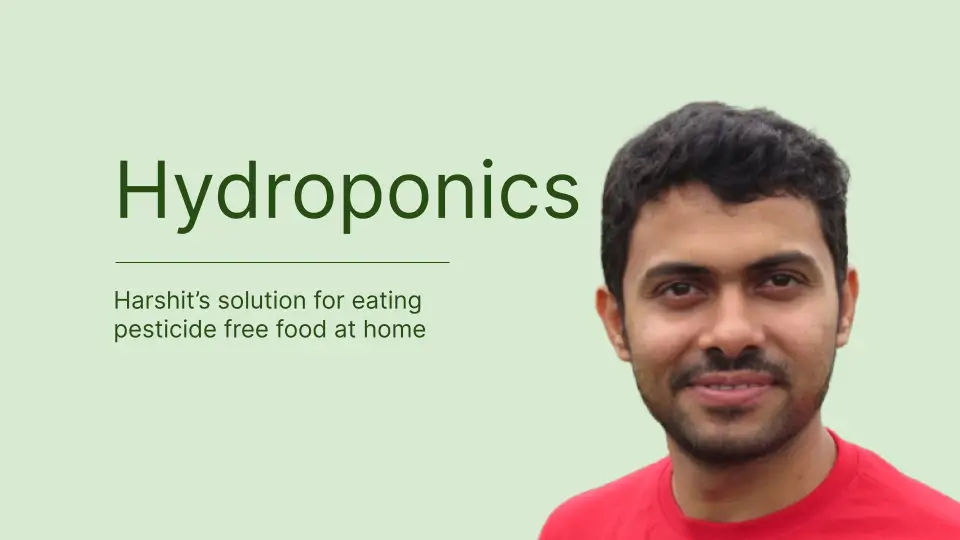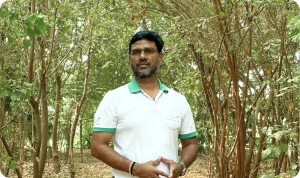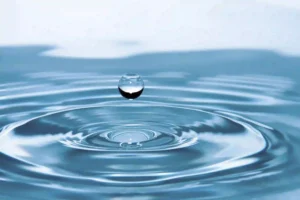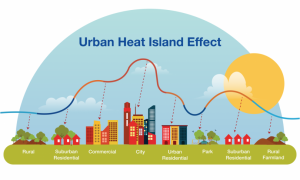How to work with hydroponics at home? Tips from a research scientist
- Achint
- August 4, 2022

Team Mission Sustainability recently got a chance to interview a young research scientist who took up hydroponics as a research project. This project later turned out to be the catalyst of a home-grown hydroponics kit that might become the new norm of farming.
Let’s begin by understanding what hydroponics is. If you’re unfamiliar with this concept, you should definitely read our prior blog post on hydroponics. Ponos means “water working,” and hydro means “water.” Hydroponics is often referred to as Nutri-culture, aquaculture, soilless method, or tank method. It employs sand or gravel and additional nutrients to produce plants. This entails soilless plants.
Opposite to soil dependence, hydroponics is completely dependent on nutrients. It produces 35-50% better yield compared to traditional farming. This is only because the plant is directly infused with nutrients which ensures a better nutrient quality in the crop. Although hydroponics is not novel (origins date back to the 10th century), it is still being researched widely.
NASA has been working on hydroponics as a way to have food on Mars since 2012. Little did it know, it’s going to use the same in 2021, but as a multi-functional life support to tackle the growing demand.
Research scientist Harshit Dave wants to offer an “at-home hydroponics kit.” Harshit has had a propensity to search for the environment ever since he was a little child. He has spent 10–15 years in Kevadia, Gujarat where the surrounding greenery has helped him stay connected to his interest. He aims to use his analytic skills to bring out the better in the environment.
What is the solution to eating pesticide free food?
Harshit took up the task of learning about the use of pesticides in fruits and vegetables during his M.Pharm (Masters in Pharmacy) project. Although being knees deep in the medical field, Harshit always had an inclination toward bettering the environment. This project of his helped him unravel the dirty facts about farming. The research started by collecting samples of farmed fruits and vegetables from all over Gujarat. After which, Harshit deployed his analytical skills to carefully devise a method to check the use of pesticides in the given sample.
Harshit recalled, “As soon as I checked the level of pesticides used, I was shocked. I thought I did something wrong, so I rechecked, but the results were constant.” According to his research, the amount of pesticide found was 100 times higher than the permissible limit. The result was jaw-dropping. “Most of the pesticides are carcinogenic. I realized that we are not consuming vegetables, but we’re consuming pesticides.” said Harshit.
A farmer’s obligation
Harshit became intrigued about this and spoke to the farmers to know more. Upon questioning, the farmers mentioned how they were doing their duty to feed the population. They mentioned how they have no other choice. If they stop using pesticides, the production will fall and cause a domino effect.
This ultimately traced back to the problem of feeding a huge population with limited resources. An already existing and practiced solution to this issue was organic farming which involves farming without using pesticides. This works as it says but has a lot of issues attached to it as well.
The first is the quality of the land. Over the years, the soil has degraded to unimaginable levels. Research shows that more than half of the country’s degraded land is either forest land, which provides the best protection against climate change, or rainfed cropland, which ensures the nation’s food security. This leaves lands infertile for growth.
Another issue with organic farming lies with the restoration. After production, it takes up to 3-4 years to restore the soil back. Harshit mentioned how his research also pointed out the realities of organic farming. Getting a certificate for organic farming is much easier than practicing it.
Another hindrance that affects the quality of organic food is the usage of inorganic material and pollutants in the nearby areas. This usage nulls the organic effect by seeping into the grounds. It took Harshit 4-5 years of research to conclude that organic farming is not feasible for India and there is a requirement for a more flexible method. His research included years of perfecting the ideal nutrient mix, which could be applied to all plants or be tailored to a specific one. This nutrient solution served as a basis for hydroponics.
Discover products and services in sustainability
Get on step closer to making eco-friendly choices
Can Hydroponics be used as a farming tool?
Hydroponics is being practiced commercially in India. With its growing awareness and benefits, hydroponics is making its way through. We asked Harshit what makes hydroponics so versatile and adaptable? In Harshit’s words, “The same place which grew 2 plants is now capable of growing 20 plants. Tomatoes which have a cycle of 90 days can now be grown in 45-60 days, and yields even more nutritious.” Hydroponics is doing better than traditional home farming. Because of its soilless nature and its dependency on just the nutrients, it yields high nutrient produce with no use of pesticides.
Harshit explained how the role of land quality is completely discarded in hydroponics. The roots are submerged in a nutrient-rich water solution. The water used in hydroponics is RO purified (TDS less than 100) which ensures perfect dissolution of nutrients in the water. With the help of a controlled environment, one can even grow all types of vegetables and fruits all year long!
To overcome the issue of using hydroponics at home, Harshit is working on developing a hydroponics at home kit. “We are already at our pilot testing which has yielded good results.” claims Harshit. To simplify how one can use hydroponics at home, Harshit gave a few tips.
- The most versatile and easy method to use hydroponics is the deep-water culture.
- Make use of a rectangular tank that is less than one foot deep. Fill this tank with a nutrient-rich solution.
- The top of the tank needs to have Styrofoam boards in which the plants will be floating.
- It does not require constant efforts such as daily watering. One only has to pour the nutrient mixture every 10-14 days.
- Constant aeration is required which is done by the motor.
- If one has an abundance of space, then proper crop planning will reduce the need of purchasing the produce from outside.
After conducting extensive research, Harshit made the decision to supply the market’s needs. He created a deep-water culture hydroponic kit for use at home that makes things even simpler. This kit can grow numerous plants simultaneously and just takes 30 minutes to put together. The retail sale of this kit will soon begin.
With this fusion of zeal and data analysis, Harshit was able to advance the production of pesticide-free food. His long-term objectives include raising awareness of the use of pesticides and the role hydroponics can play in reducing it. He also looks forward to assisting commercial farmers in growing the best product by offering training sessions and consulting services.
Join our monthly newsletter for inspiring stories
Recent Blogs



